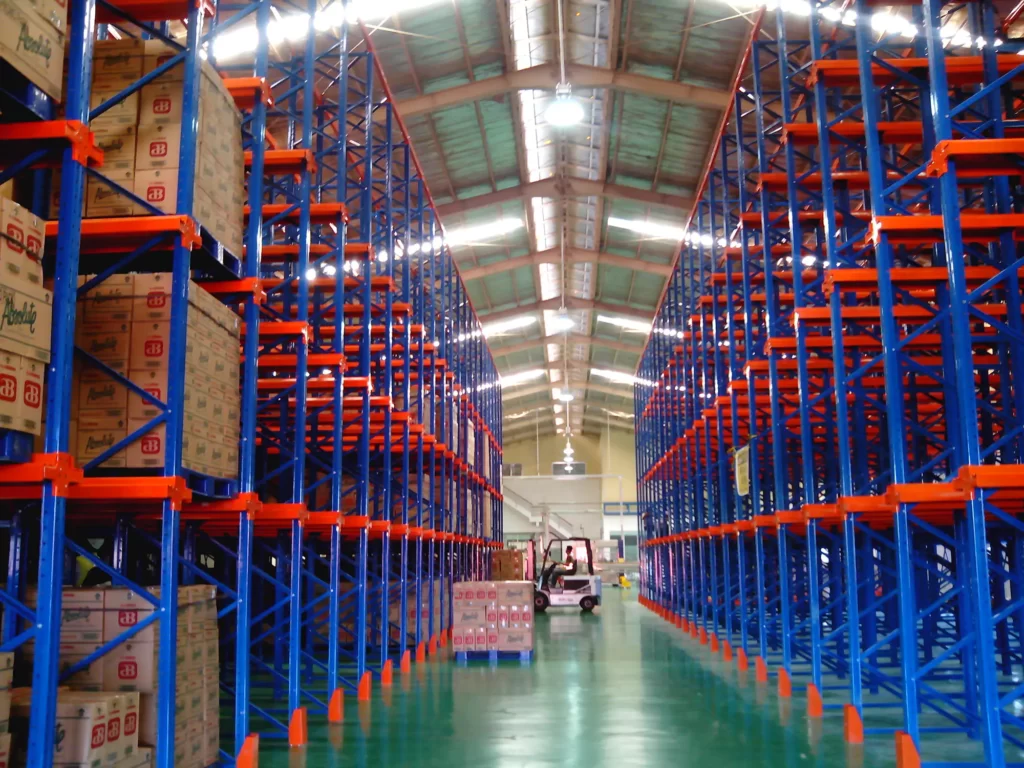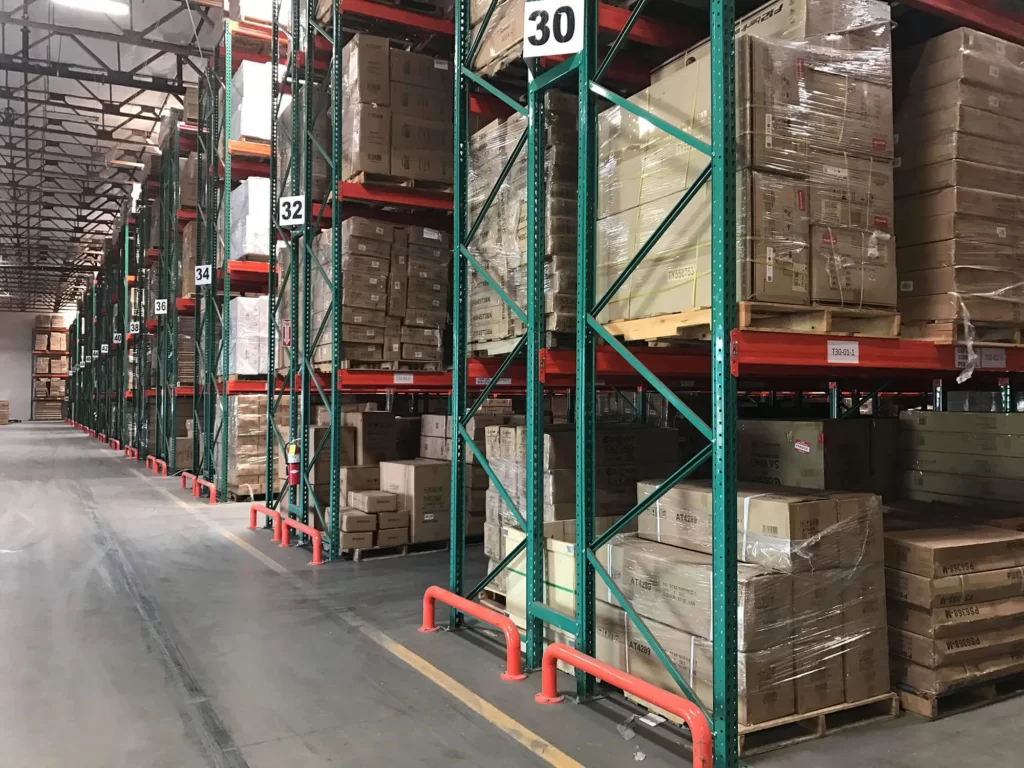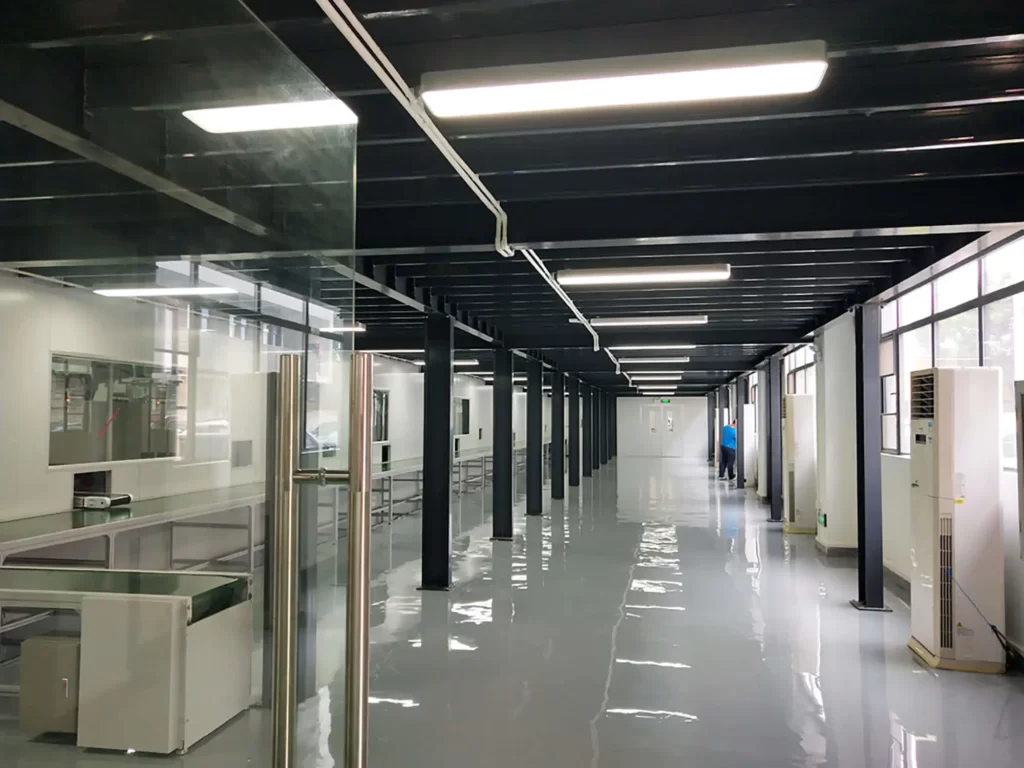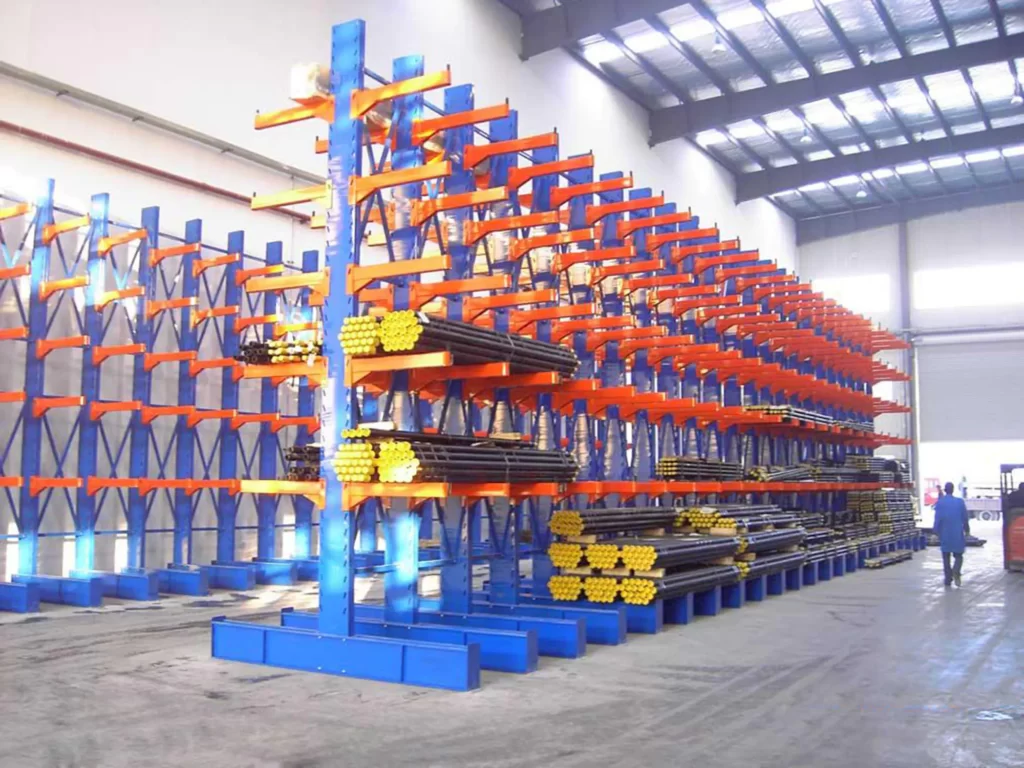A warehouse racking collapse can be the worst nightmare for the Owner and worker of a warehouse. It also means that the products stored in the warehouse racks may be damaged.
If the owners and managers of a warehouse remain cautious, the chance of racking collapse is the bare minimum. Today we will discuss everything you need to know about the warehouse racking collapse.
Most of the time warehouse racking collapse takes place due to the negligence of the warehouse managers. Racking system collapse can be prevented in most cases by taking preventive measures.
In this article, we will investigate in detail the common causes of warehouse racking collapse. Owners and managers of a warehouse should be aware of the reason that causes warehouse racks to collapse.
In addition, we will also be discussing the consequences of a warehouse racking collapse. How a racking system collapse may negatively affect the warehouse business will be discussed in that section.
Finally, we will discuss how to prevent the warehouse racking collapse. We will discuss various preventive measures that warehouse managers and owners can take to prevent rack collapse.
This article will be a complete guideline for anyone who wants to know about rack collapse in detail. This article will be particularly beneficial for the following groups of people:
- Owners and managers of the warehouse.
- People who store their goods in the warehouse.
- People who have plans to come into the warehouse business.
- Academicians and researchers who want to know about the racking system collapse.
What Are The Most Common Causes Of Racking Collapses?
Modern logistical demands have compelled businesses to keep massive inventory in a small amount of space. Businesses also strive to minimize material and operating costs.
While cutting down the cost of material, the safety procedures of racking systems are often overlooked. Now, we will discuss some of the most common causes of heavy-duty pallet rack collapses:
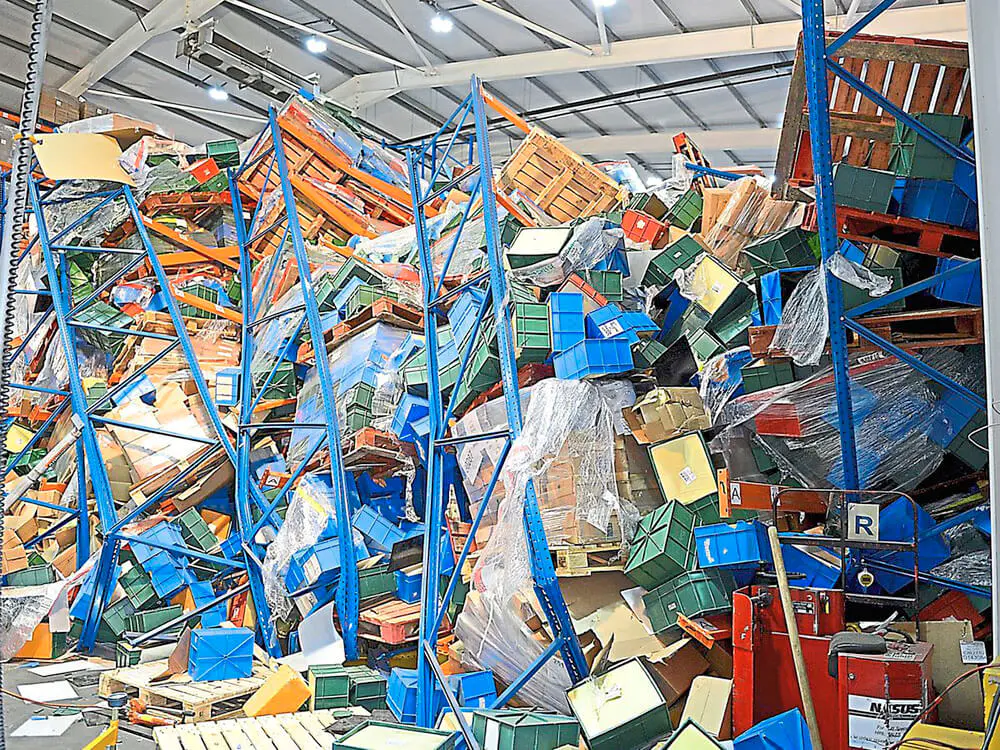
Overloading Or Unequal Load Distribution
Overloading is one of the main reasons for the racking collapse. The racking system is made to support weights to a certain limit. If weight density goes over that limit, it may eventually cause irreparable harm to all elements.
Structural damage can also result from placing uneven weights on the pallet support beams. Uneven weight distribution can eventually weaken the load support beams’ structural integrity.
Relocated Rack System
The vast majority of racks used in a warehouse are elegantly designed. They are designed to be used in a type of setting for a particular purpose. A rack that is effective for storing one kind of item might not be effective for storing others.
A drive-in pallet rack is constructed to store a lot of similar products in a small amount of area. Forklift drivers can reach racks that are kept on continuous tracks by entering from one side of the layout.
Drive-in racks are not appropriate for storing products that require a higher level of selectivity. This is because there is a substantially larger chance that racks and forklifts will collide.
If drive-in racks are used in storing products that require a higher level of selectivity, the rack may collapse. Several things are considered while designing a racking system and they are:
- The travel distance of forklifts.
- Operational loading stress.
- Speed calculation.
- Rack sustainability.
If the rack system is relocated, engineering calculations must be restarted from scratch. This is done to ensure that the system is compatible with the new place and use.
There are serious implications if engineering estimates are neglected when designing or moving the racks. For instance, the system could fail to support the load adequately and collapse.
Also, due to their lower cost, used racks were a popular choice among businesses. Some businesses even frequently use racks from older projects to newer projects.
While using older racks, companies often ignore the factors of properly reusing the racks. This might cause a disastrous system breakdown and the racks could collapse anytime.
Forklift Damage
In a warehouse, a forklift is ideal for moving goods. It lifts and carries weights. A forklift handles weights that humans are unable to manage effectively. But sometimes, this kind of equipment doesn’t perform as expected.
The rack might be damaged by the forklift if the operator had made an error in handling the forklift. Racks can lean or collapse after forklift collisions.
It is also capable of denting paint or protective powder coating, exposing the underlying metal to corrosion.
Incorrect Installation
Racking systems may appear to be a bunch of shelves stacked up, but it’s more complicated than that. The process of setting up a racking system involves extensive planning and calculations.
Although many contemporary racking systems are simple to install, they need particular skills and tools. The internal structure of racks may be damaged if components like spacers, or base plates are installed incorrectly.
Installations of low-cost, low-quality systems could ignore the safeguards that preserve the system. In addition, if some parts aren’t installed properly, it reduces the weight capacity of the system.
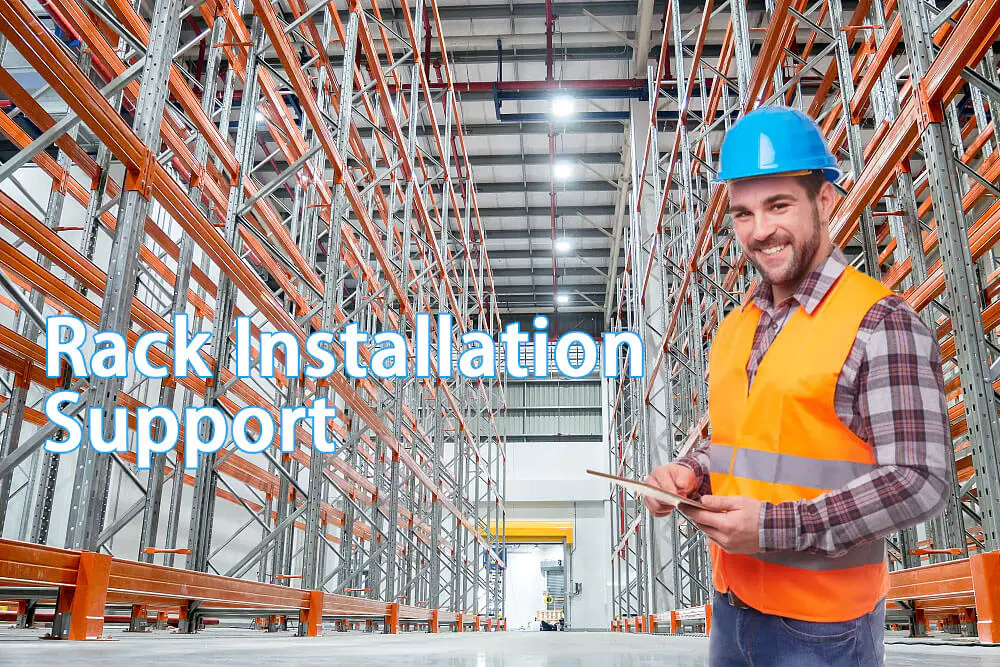
For instance, a rack’s can weight capacity is 2,000 Ibs. But suppose some parts of it aren’t installed properly. As a result, its weight capacity will be reduced to 1700 Ibs. Now, if 1900 Ibs weight is put on it, it can collapse due to incorrect installation.
Design Error Of A Warehouse
For productivity and efficiency, a warehouse layout should be strategic and well-organized.
While designing a warehouse layout and racking system, the following things are considered:
- Accessibility.
- Size.
- Aisle width.
- Load capacity.
Suppose, a warehouse has been designed with insufficient aisle width. Then, the damage may happen while using mechanical and manual picking equipment.
Corrosion
Corrosion is another reason for the warehouse racking collapse. There are some parts in the racks like:
- Support Bar.
- Steel Plate.
- Row Spacer.
- Screws.
- Frames.
Slow and persistent corrosion of these parts can reduce the load-taking capacity of the racking system. As a result, the racking system could collapse.
When the steel in racking components is exposed to the air, corrosion occurs. The rate of corrosion might depend on the following things:
- Ambient standing water levels.
- Temperatures.
- Humidity.
If corrosion is not quickly addressed, it can lead to part failure within a few years.
Breaking Of Beams Or Upright
The loading pressures on the warehouse racks might be both horizontal and vertical. While the vertical pressure is dispersed over the uprights, the horizontal load is distributed across the beams.
Beams and uprights are both made to withstand a specified amount of bending stress. So, overloading may result in beams and uprights being broken. However, the collapse of the racking system by breaking beams or uprights is a rare incident.
Inexperienced Or Incompetent Warehouse Operator
There are some racking systems like the mobile racking system that can be fully automated. Mobile racking systems need a minimum number of warehouse workers or operators.
However, the mobile racking system is very costly. So, the majority of warehouses around the world are still using manual operating systems. Manual operating systems like selective pallet racking systems need workers and operators to handle the pallet racks.
If the operators of a warehouse are not trained properly, they can be a reason for warehouse racking collapse. To know more about different types of pallet racking systems, read pallet racking types.
What Are The Consequences Of A Warehouse Racking Collapse?
The racking collapse of a warehouse may be disastrous for a company or a business. Some of the consequences of the warehouse racking collapse are as follows:
Monetary Damage
The collapse of warehouse racks may cause significant monetary damage to the warehouse owners. For instance, the warehouse rack system that would collapse would need repair or replacement.
Whether the rack would be repaired or replaced, the warehouse owner will have to pay for it. Also, the goods stored on the rack can be damaged as a result of rack collapse. If the goods stored on the racks are damaged, warehouse owners will have to pay for them too.
Impact On The Goodwill Of The Company
For any company, goodwill is a very important factor. For instance, people will buy branded phones or clothes even if they have to pay more for them. The reason many people buy branded things is because of the company’s goodwill.
Many big companies have warehouses. These companies control from storing goods to hiring operators, everything in the warehouse. If the racking system collapses and the news reaches the marketplace, the company’s reputation may get damaged.
For instance, “Y” is a pharmaceutical company. It had kept many medicines stacked in its warehouse. If for any reason, the warehouse racks collapse, it will create a negative public sentiment about the company.
People will have a negative outlook on that pharmaceutical company as they can’t keep their warehouse safe. This goodwill damage is very harmful to any company in the short and long term.
A company may lose new investments and sales may go down as a result of goodwill damage. Also, the collapse of a racking system indicates the management failure of the company. So, companies need to manage warehouses efficiently to prevent racking collapse.
Unsafe Work Environment For The Workers Of The Warehouse
If a rack collapses and the racks fall on the worker, the worker may get injured. If a worker gets injured while working in the warehouse, it indicates an unsafe work environment. An unsafe work environment reduces the productivity of the workers.
How Can I Keep My Warehouse Pallet Racking System Safe?
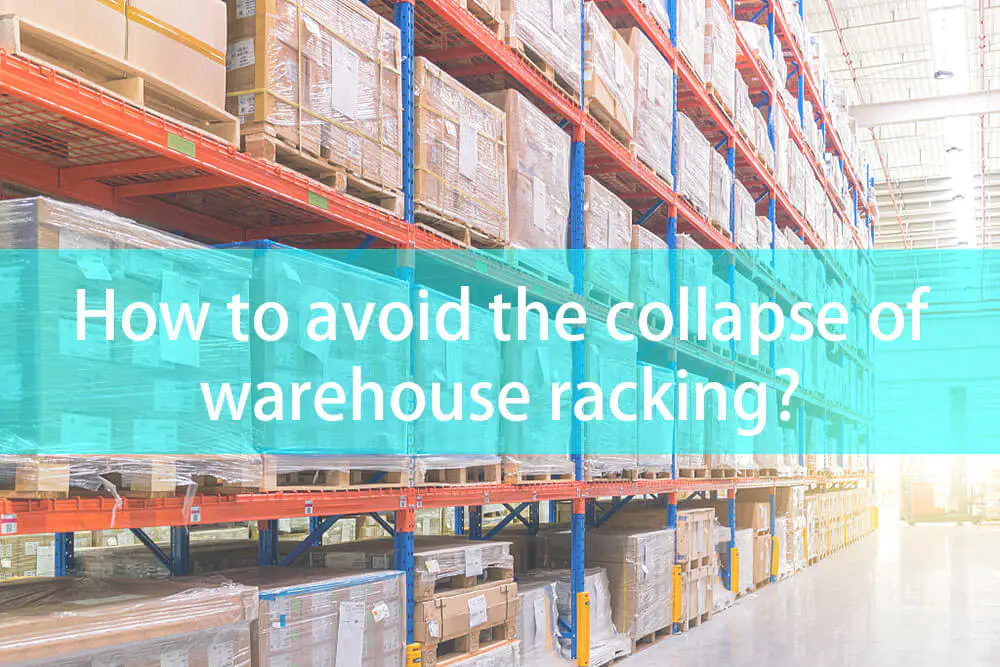
In the previous section “Consequence of Warehouse Racking Collapse”; we have explained how bad rack collapse is. It results in the damage of the goodwill, an unsafe work environment, and monetary damage to the company.
Many people have a perception that the racking system collapsed in just an accident. This kind of accident may take place in any warehouse. However, the perception of warehouse racking collapse as “just an accident” is completely wrong.
In the section, “Most common causes of racking collapse”, the reason behind racking collapse was explained. In that explanation, the causes of racking collapse are found to be related to human or mechanical errors.
So, errors like this can be detected and if proper actions are taken, racking collapse can be avoided. The warehouse owners and managers can take the following steps to keep the warehouse pallet racking system safe:
Properly Training And Educating The Warehouse Workers And Operator
There is a saying “Knowledge is power.” This saying is especially found to be true and related to the warehouse’s circumstances. The workers and operators of a warehouse must be trained and educated properly about the racking system.
Training should cover employee safety and the usage of warehouse machinery. Without understanding safety rules, the workers will be unsure of what is and is not acceptable. All workers should receive basic training on how to report rack damage.
Operators of forklifts should get training on all forklift usage-related maintenance and safety issues. When it comes to activities like driving forklift trucks, experience is essential. Workers should never operate forklifts if they haven’t received comprehensive training in this regard.
Personnel from other administrative departments should not enter the warehouse unless it’s necessary. To keep safe, they must receive thorough instruction on the appropriate equipment to wear and movement paths.
If the warehouse owners can ensure proper training of warehouse employees, the risk of racking collapse reduces significantly.
Handle Pallets Properly
Any racking that’s used at the warehouse needs to be specifically customized to the product’s dimensions and weight. Pallets must be arranged squarely and evenly. The warehouse workers should replace any damaged pallets right away.
Reasonable Warehouse Racking Layout Design
Warehouse racking layout design also should be done by a professional. It should have sufficient aisle width. While designing a warehouse, its accessibility, size, and capacity should also be considered.
Also Read, warehouse racking design layout?
Warehouse Clearances
Maintaining a clean environment at your warehouse is also important for racking safety. The following measures can be taken to ensure warehouse clearances:
- Keep the aisles clear of trash and debris.
- Sort the pallet sections into categories.
- Make it a rule for the workers to remove any barriers at any height they come across.
Ask Professional Rack Installers To Install The Racks.
Sometimes, warehouse managers ask workers to install pallet racks. If the workers don’t know how to install them properly, this may increase the possibility of warehouse racking collapse.
To avoid pallet racks from collapsing, installing them properly is an important step. Installing a pallet rack by professionals prevents pallet racks from collapsing.
Avoid Overloading or Unequal Load Distribution
Pallet racks that are poorly loaded are dangerous. These racks may break down at any moment.
Warehouse owners and managers should make sure that goods are never overloaded on pallets. Racks should not be filled above their maximum capacity. Another thing that can be done to avoid overloading is to label the racks.
For instance, a rack can hold products and goods of 2000 Ibs. Labels should be placed on the racks that will indicate that its maximum load capacity is 2000 Ibs.
Labeling is also important as sometimes workers work in shifts. One shift of workers may not necessarily communicate with another shift of workers. Labeled racks with maximum weight capacity will help workers to clear out confusion about the rack’s weight limits.
All weight capacities need to be checked. Make sure employees pay close attention to upper levels’ weight capacity. The heavier loads should be stored on the ground or in lower levels by the workers.
Unequal load distribution in a rack causes imbalance. As a consequence of imbalance, one side of the racks may get weaker. The weaker part of the racks may cause the rack to be collapsed. That’s why unequal load distribution in a rack should be avoided by the workers.
Storage should be planned by warehouse managers such that lighter pallets are in higher bays. Heavy pallets with mixed loads, should be in lower bays. Containers must have a height restriction to ensure their stability and security against sliding or collapsing.
Buy Warehouse Racking From A Professional Warehouse Racking Manufacturer
Warehouses should make sure that they buy racks from professional rack manufacturers. Professional rack manufacturers are experienced in designing and constructing racks. Also, a rack bought from a professional manufacturer typically lasts longer.
To find out about various pallet racking system costs, pallet racking costs will be helpful to you.
Use Rack Auxilary Equipment For More Safety
There are various rack auxiliary equipment, which includes,
- Guardrails.
- Row spacer.
- Upright protectors.
- Wire mesh decking.
- Steel plate
- Wood plate
This rack auxiliary equipment adds to the security of the racking system and prevents it from collapsing.
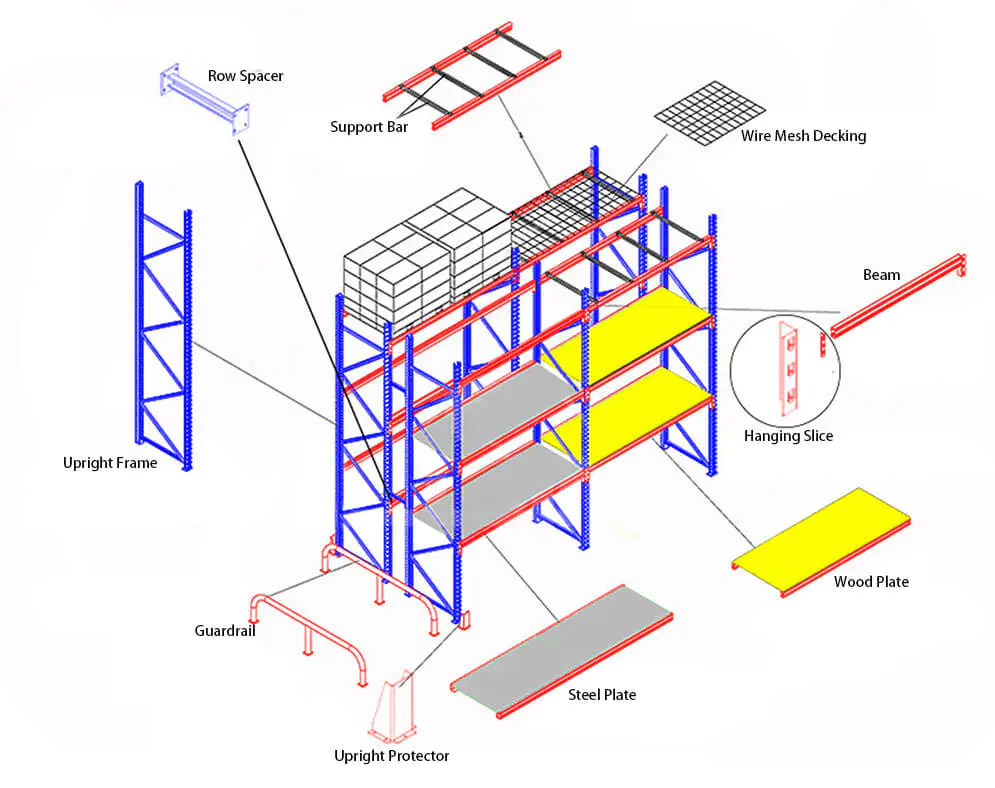
Inspection of Accessories and Components of the Racking Frame
Keep in mind beam locking when inspecting beams. These tools stop beams from unintentionally moving during routine loading and unloading. The locks must adhere to SEMA Code and might be constructed of metal or plastic.
Front-line workers are often too busy to notice minor damage or leaning racks. That’s why completely relying on them for racking inspection will not be wise. Walkthroughs should be performed once a week or as frequently as managers’ schedules permit.
The optimal frequency for thorough rack checks should be once per month. Inspections are especially crucial for older machinery that may start to corrode or exhibit other signs of aging.
Another crucial question is What should be done if any damage is found during an inspection? The racking needs to be completely unloaded while repairs are being made.
Steps like inspections can cost a company a lot of time. Managers may have to put extra effort into inspecting the racks. But these steps are essential to prevent racks from collapsing.
Managers may also assign someone from the workers to inspect the racking system to save time.
If these measures are taken in a warehouse, it will be safe from rack collapse. It is always better to take steps before any rack collapse happens. As the saying goes, “Prevention is better than cure.”
Among the reasons mentioned above to prevent rack collapse, properly training workers is the most important. Because training the workers properly can prevent many accidents like these in the future.
What Are The Osha Requirements In Warehouse Racking Systems?
The full form of OSHA is the “Occupational Safety and Health Act.” This act was passed in 1970. In the US, safety and health laws are governed by the OSHA, a federal organization. OSHA has advocated the following significant storage rack regulations:
1910.176(a) – Use Of Mechanical Equipment
“Where mechanical handling equipment is used, sufficient safe clearances shall be allowed for aisles, at loading docks, through doorways, and wherever turns or passage must be made.”
This part also states that “Aisles and passageways shall be kept clear and in good repair, with no obstruction across or in aisles that could create a hazard. Permanent aisles and passageways shall be appropriately marked.”
1910.176(b) – Secure Storage
“Storage of material shall not create a hazard. Bags, containers, bundles, etc., stored in tiers shall be stacked, blocked, interlocked, and limited in height so that they are stable and secure against sliding or collapse.”
There are many sections in the OSHA act. Particularly 176(a) & 176(b) is relevant to the warehouse racking system. In our previous section, “How Can I Keep My Warehouse Pallet Racking System Safe?”; we discussed it. For instance,
- In 176(a), OSHA instructs to keep aisles and passageways clear. We have discussed it in the previous section’s subsection “Warehouse clearance.”
- In 176(b), OSHA instructs warehouses to keep containers stacked…and limited in height so that they are stable… We have discussed this in the previous section “Avoid overloading an unequal load distribution.”
If these OSHA requirements are followed properly, warehouse racking collapse can be prevented. Although it’s a law passed in the USA, the guidelines apply to the warehouse industry overall.
Besides the OSHA requirements, we have discussed more ways to prevent rack collapse. If you would like to learn more about pallet rack safety, please read the Pallet Rack Safety Guide.
In our article, we have explained in detail warehouse racking collapse. Let us know if you have any experience or have seen warehouse racks collapsing. If you want to share your thoughts about this article, let us know in the form section below!




